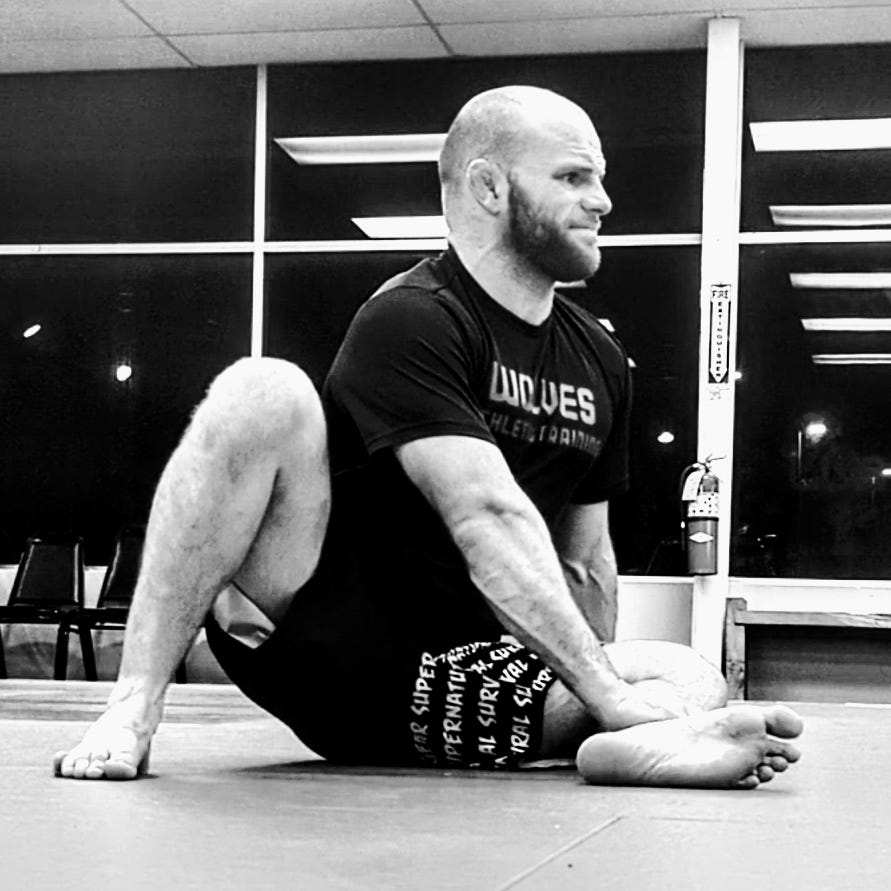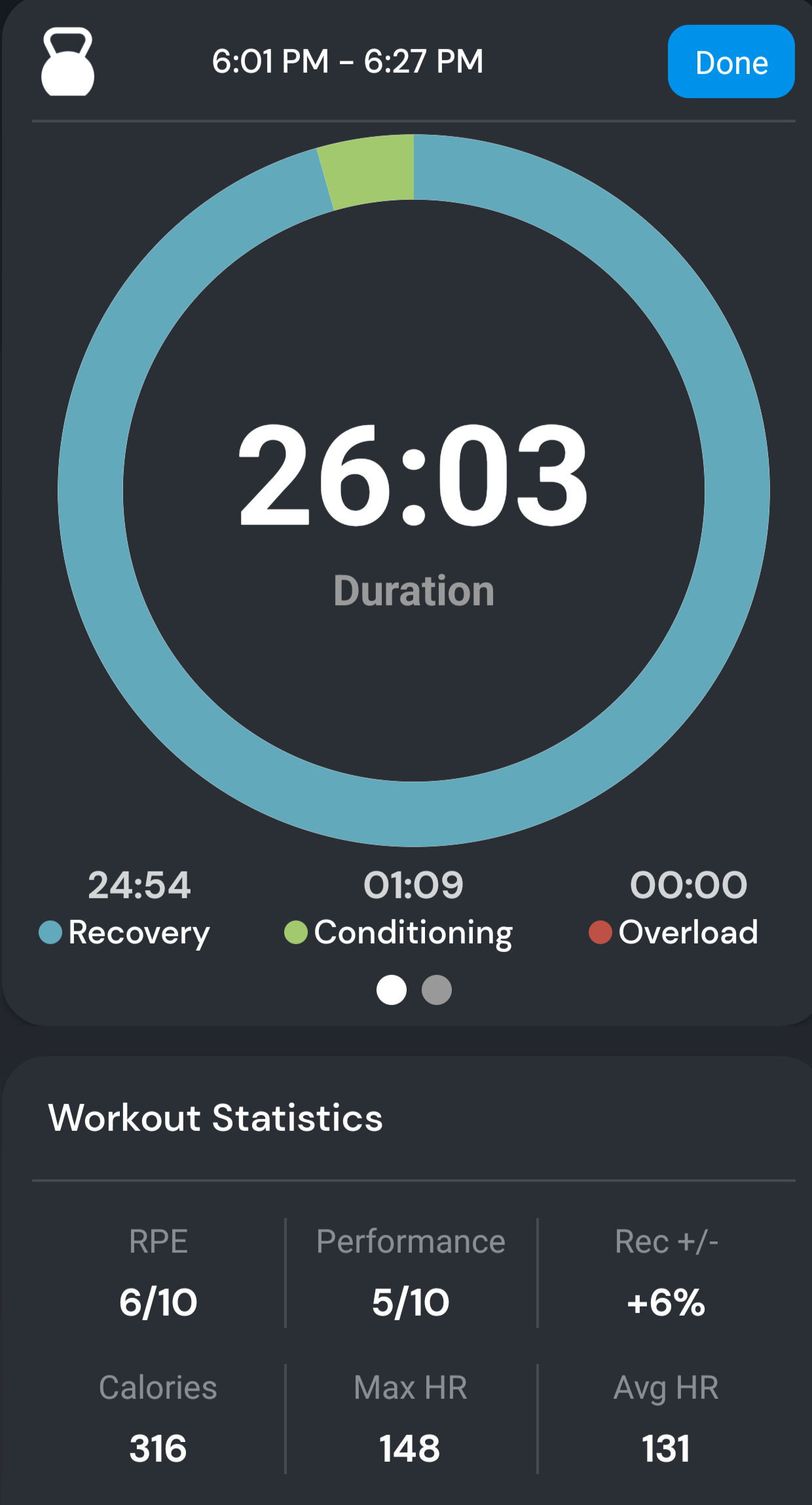Rebound Training: Better Active Recovery
"Rebound Training is a targeted way to help your body shift into the recovery state."
More is not always better, better is always better. Do you know your “engine” well enough to train every day and intuitively know which sessions are contributing towards or diminishing your ability to perform well? I don’t, but here are some tools I use to get started on the process.
It may seem obvious that in order to perform well, one needs to have first recovered well. However, a lot of combat athletes think of recovery as a side-dish or an after thought at best. This paradox gets a lot more obvious the older you get and the higher level of performance you achieve.
The term active recovery isn’t new. In case you’re not familiar with it, it stands in contrast to passive recovery — which is essentially doing nothing except loafing on the coach and catching up on sleep.
While the later isn’t inherently bad, it’s not the most efficient way to recover. While our body needs rest to recover, it also needs nutrients pumped in and waste products pumped out. To do that we need blood flow, and quite a bit actually.
What I’m not going to talk about here is all the “recovery hacks” filling up your social media feed; things like saunas, cold plunges, cryotherapy, foam rolling, red light therapy, massages, etc.
Those things have a role, but they are more filler than foundation.
A general framework for recovery might look like this then:
Rest (avoid further damage / sympathetic stress)
Nutrition (specifically protein, and maybe carbohydrates)
Blood Flow (to get nutrients in to and waste products out of tissues)
Under the Morpheus / BioForce platform we talk about Rebound Training. This is similar to active recovery, but is more specific and intentional in it’s framework.
“Rebound Training is a targeted way to help your body shift into the recovery state.”
~ Joel Jamieson
Any body builder, or weightclass based athlete, knows that what you eat is a highly relevant part of your “training.” While we can certainly get lost in the weeds on this topic — as many people, myself included often do — some folks need this reminder. Abs are made in the kitchen.
Rest is also fairly straight forward. Get better quality, and hopefully more volume of sleep. Make this non-negotiable in you life.
When you put those two things together, you get the common descriptor of parasympathetic (PNS) activity — the “rest and digest” part of your central nervous system.
This is a big ticket item for a lot of first-responders, combat / tactical athletes, etc. Doing “more” usually isn’t our problem; neither is going harder. We could use a little, or a lot, of “down-regulating” rather than more “amping up.”
Here’s how to do that.
Rebound Training happens in the gym, not the bedroom or the kitchen. It’s an active rather than a passive process. However, the goal is to procure parasympathetic — rest and digest — activity rather than sympathetic activity — fight or flight.
A General Template (ref.) for rebound training looks like this:
Recovery Breathing
Recovery Zone (2) Training
Strength Stimulation
Recovery Cooldown / Mobility
When I have tried to incorporate “active recovery” before, or “Zone 2 Training”, I’ve fallen into the trap still wanting to go harder. A training session can’t simultaneously stimulate development and regeneration. Simply put, I was trying to develop a different energy system (endurance) and as a result kept digging the hole of recovery deficit deeper.
Fortunately, I’ve learned to do things differently. I learned that I’m not good at running, and it was easy for “recovery” sessions to become a net negative. However, if I had taken “endurance” in the context of “stopping when I feel like I could have doubled the session”, that would have lead me to a more modern perspective.
For example, if a 40 minute run is “hard” for me, then a “recovery” session might only be 20 minutes tops. By a similar token, utilizing non-monostructural endurance (e.g. circuits) or hypertrophy can lead to a similar predicament. The key for rebound training is that you should feel better when the session is over.
My own “rebound session” template looks like this:
Extended Zone 2 Warm Up (~15 minutes)
Short Circuit / Shock / Hypertrophy (~10 minutes, RPE 5-6)
Global Mobility Routine (whole body, 15-30 minutes)
Overall Training Time: 45 minutes or less
As mentioned above, the circuit needs to stay moderate in intensity, but can also be leveraged to address more complex movements; bridging into mobility; for example:
Warm Up: 12” step ups x 15 minutes (low technicality, high cardio)
Circuit: 24” Step Ups and Turkish Get-Ups (medium technicality and cardio)
Mobility: CARs + ATG Squats / Lunges (high technicality, low cardio)
I will have a longer 90-day review of the Morpheus system overall, but I also want to mention the importance of utilizing “technology” to develop one’s intuition. In the above 10/10/24 session, my “Zone 2” pace — per Morepheus’s adaptive zones — was down to 48 RPM on an Echo Bike. Normally, my 30+ minute pace is around 52-55 RPM.
Here we can see that attachment to an arbitrary output (e.g. RPM / speed / watts / etc.) can be misleading. Even our own heart rate can be quite fickle. Our breath can be a bridge between this gap, but again also can lead us astray (e.g. attachment to various cadences and patterns).
You may also note that breath work is absent from my template. But I certainly do incorporate it into my overall recovery strategy.
I also try to use my gym time as specifically and wisely as I can. On the one hand, I can do breath work on the drive home — which is my usual choice. However, if I know I’m prone to letting myself off the hook then it’s best to do it while you’re already at the gym as part of your regular training.
To wrap things up:
Recovery is an active process.
Some of the most important recovery activities you can engage in are: sleep, nutrition, and rebounding.
Rebound training should make you more prepared to train tomorrow, not make you more sore and spent today.
Breath work means actively participating in your physiology which can be incorporated inter- or intra-session to down (or up) regulate nervous system activity.





